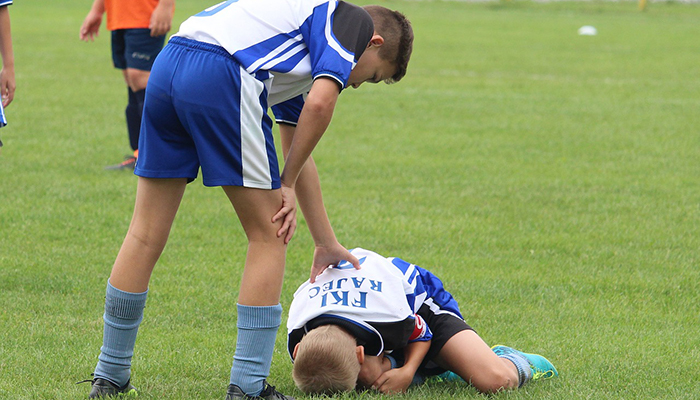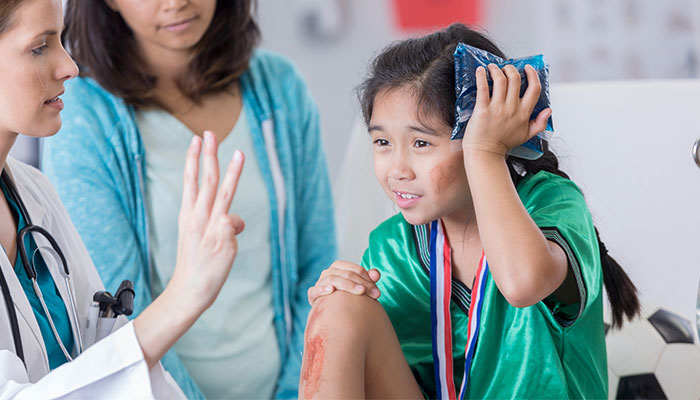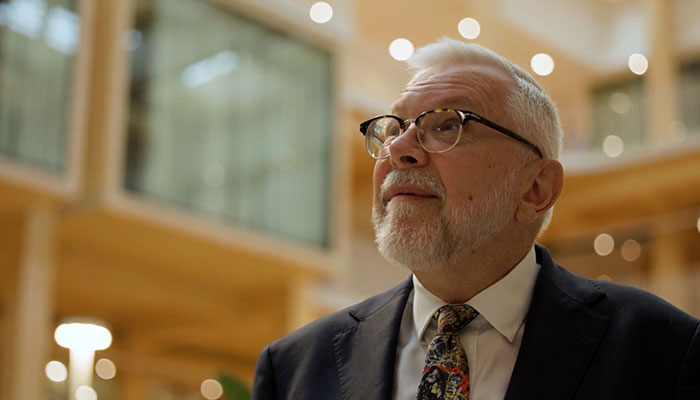Traumatic head injury is the world’s leading cause of trauma-related death and physical and intellectual disability in adults and children.

Head injuries, usually as the result of a collision or fall, are common in Australian children, with around 20 per cent experiencing one by the age of 15. The majority are minor and it can be difficult to know how to react: miss a serious head injury and the consequences can be life-threatening, overtreat a mild injury and there is also a price to pay.
A new Macquarie University study has looked at the evidence-based recommendations (known as clinical practice guidelines) that outline to medical staff how best to assess, treat and monitor a child with a head injury and identified five top tips for parents. This research is part of the landmark CareTrack Kids study that investigated how often children received the most appropriate care in line with clinical practice guidelines for 17 common conditions, one of which is head injury. The results from 629 cases of children with head injury have been released in time for Brain Awareness Week (March 16-22).
Former nurse and Macquarie University senior research fellow Dr Janet Long said the study was motivated by the desire to provide high quality care to patients. “As a mother of three, I know how scary it is when a child bumps their head and you have a lot of questions – should they have a head scan, X-rays, this test or that test?” she said. “And so we have measured how often doctors in Australian hospitals and GP clinics provide care that is in line with the best practice guidelines. In doing this, we can also highlight the checks a parent might not know to look out for.”
The check list
Dr Long listed the top five checks a parent or carer could expect to be done for their child by a healthcare professional after a head injury:
1. Check and record signs and symptoms of head injury including if the child is confused or drowsy. Look in their eyes to see how their pupils react to light. Check any bumps, bruises or wounds on the head.
2. Ask whether the child is normally well, is on any medications or has had any previous head injuries or seizures. “Recording the medical history is very important,” said Dr Long. “Appropriate care means carefully taking the child’s medical and medication history in order to determine whether something underlying caused the head trauma incident.”
3. Record the time and circumstances of the injury.
4. Order tests (such as blood glucose levels) only if justified.
5. Outline to the primary caregiver how to look after a child who is sent home with suspected mild head injury.
“While adherence to clinical practice guidelines is important, our healthcare professionals are very well trained and will treat each child as an individual and make informed decisions about their care,” Dr Long said.
The impact of overtreating a minor brain injury included unnecessary exposure to radiation, side effects or worry for the child, as well as wasted resources. “It’s important to get the appropriate care for the child’s particular circumstances,” Dr Long said. “Especially in these days with emergency departments overloaded with Coronavirus patients, it’s good to know under what circumstances you would bring the child back to the hospital.”
Health carers pass the test
The results were good news for health practitioners, showing that best practice for assessment of head injuries was mostly followed, although documentation of past injuries could be improved.

“The message is that you can have confidence children with head injuries are being well cared for,” Dr Long said. “The other good news is that the health system now has a benchmark for how well children are cared for. We would like to see this study replicated in the future in order to measure changes to that performance.”
The study, the largest of its kind, was led by the Australian Institute of Health Innovation with partners from University of New South Wales, Sydney Children’s Hospitals Network, National Health and Medical Research Council, BUPA Health Foundation, New South Wales Health, the Clinical Excellence Commission, University of South Australia, Children’s Health Queensland, South Australian Department of Health and the Australian Commission on Safety and Quality in Healthcare.
Dr Janet Long is a Senior Research Fellow, Centre for Healthcare Resilience and Implementation Science (CHRIS), Australian Institute of Health Innovation, Faculty of Medicine, Health and Human Sciences, Macquarie University.



